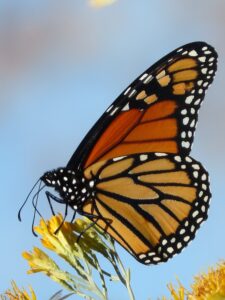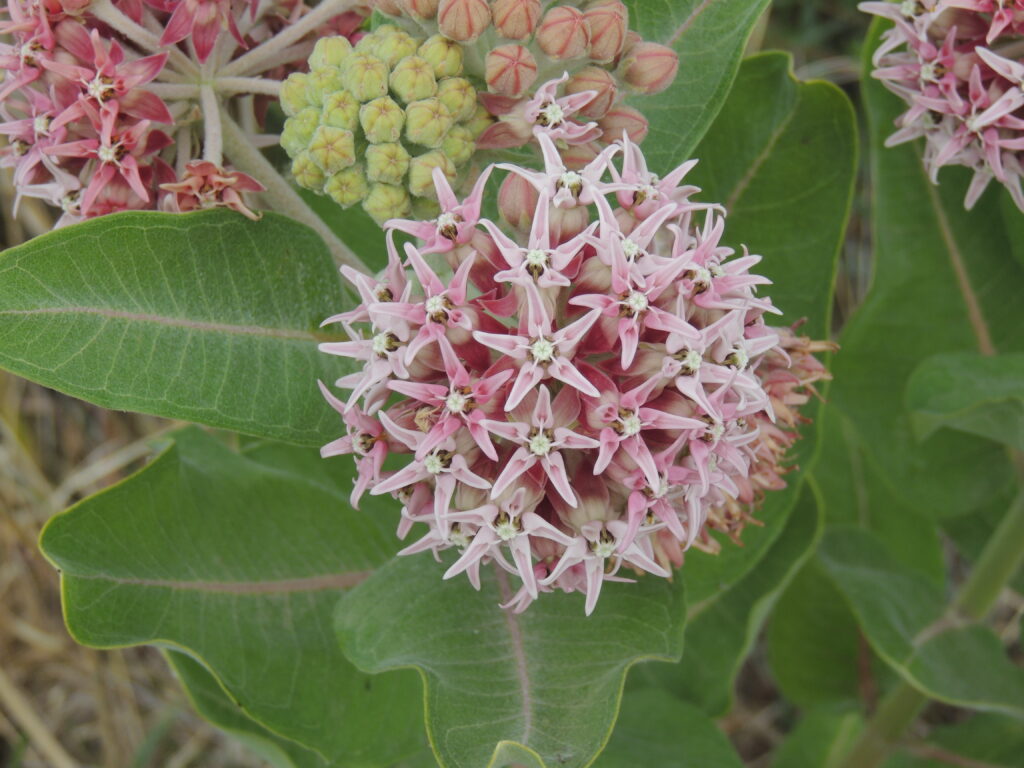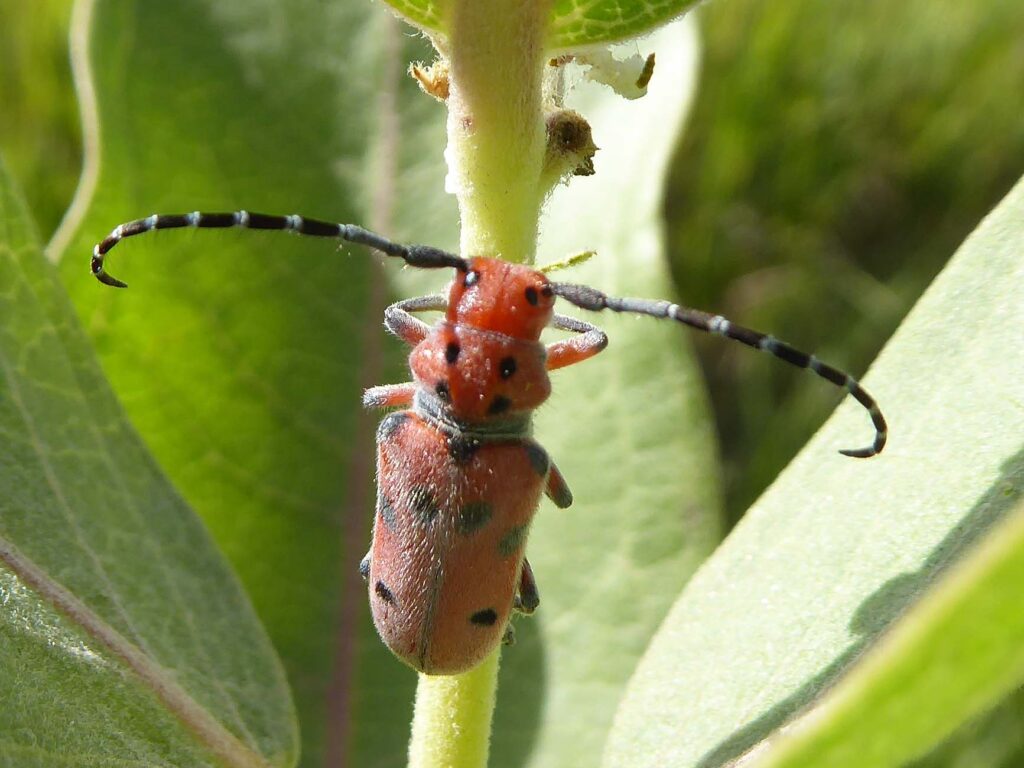Monarch butterflies regularly make the news, perhaps because they are everyone’s favorite butterflies.
Their epic migrations capture the imagination. It seems improbable that such fragile insects would even attempt to wing it from Canada to Mexico, or from the Midwest to the California coast, to find a winter hibernation haven.
But they do! In 2023, some promising data showed that their plunging counts on the hibernation grounds reversed to show very slight gains. Let’s hope we can keep that trend going by maintaining and enhancing habitat for these travelers, and by planting more, and the right kind of plants. The right plants — if your intention is to support entire and uncompromised insect communities — are native plants raised locally.

The Importance of Milkweed
Milkweeds are the plants that immediately come to mind when you think of monarch butterflies, although adult butterflies nectar on other species as well (rabbitbrush seems like a late season favorite). Milkweed plants are known for their sticky white sap that contains cardiac glycosides. These chemicals are toxic to many animals, including us, but milkweed caterpillars and butterflies have adapted to handle the deadly-to-many brew. When the caterpillars munch on milkweed leaves, the toxins they ingest endow them with some protection from being eaten by would-be predators.
Boulder County is home to several species of milkweed, some of them flashier than others. Showy milkweed, the best-known of our local milkweeds, is a good species to plant in sunny spots if you want monarchs. This plant is distinguished from others with its chunky pale green leaves, pink nearly tennis-ball-sized pink blossoms, and knobby curved pods that split to release more seeds than you would ever think could fit inside. You may see it growing in relatively unfussy locations: roadsides and medians, ditch banks, the edges of agricultural fields, and along waterways. A second species, also eye-catching, is the swamp milkweed. It has narrower leaves and darker pink blossoms. Its pods are thinner and smoother. It is a wetland lover, sprouting in swampy ground.
The other five local milkweed species are less commonly seen, unless you deliberately hunt for them, and their flowers are less showy. All seven of the local species used to be classified in a plant family of their own but have been reassigned to the dogbane family, which makes sense if you compare pod forms.

When you come upon milkweeds, you have before you an entire and enticing assembly of fascinating life to explore. Look under the plant’s broad leaves to find minute yellowish ridged monarch eggs — the start of it all — or the tiniest early instars (starter caterpillars) mere millimeters long. Roaming about the plants, the striped late instar caterpillars would seem to be a potential feast, except with the sequestration of yucky and toxic chemicals, they are a nasty mouthful for predators. Later in the season, look for pupae — dangling green and unmoving, ornamented with gold dots — butterflies to be.

Just as there are several milkweed species that thrive here, all possessing toxic juices, there are also several insect species besides the monarchs that have developed a tolerance for the milky sap. As you inspect the milkweed clumps, look for the rosy-colored milkweed longhorn beetles peering out at you, their long, black-and-white-striped antennae waving comically. Or notice the small milkweed bugs, with their striking black and red coloration and “X” shapes on the upper abdomen that show the under wings tucked neatly beneath the upper wings.
There’s only one snag to finding milkweed plants, whether monarchs are laying eggs on them or floating on by: The plants tend to be addictively time-consuming! There’s so much interlocking life in each of these plants that your brisk hike might morph into a very slow amble.



